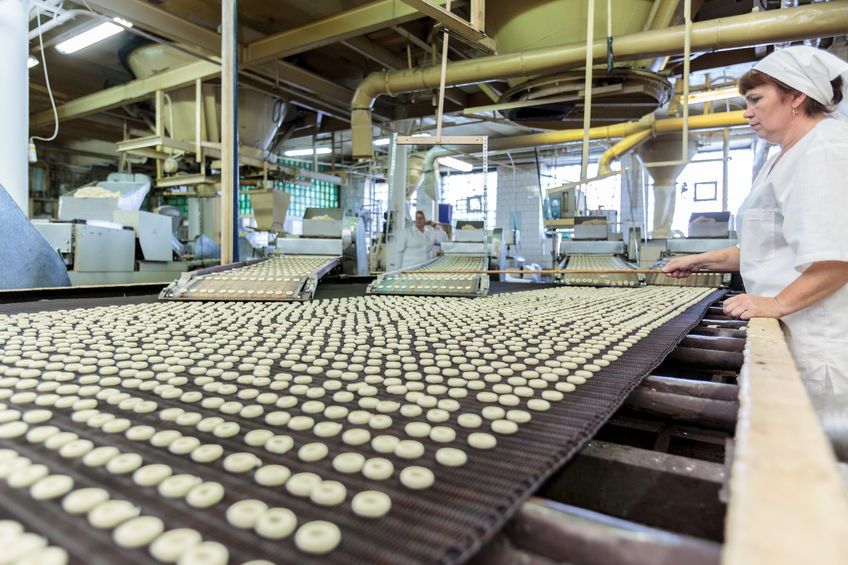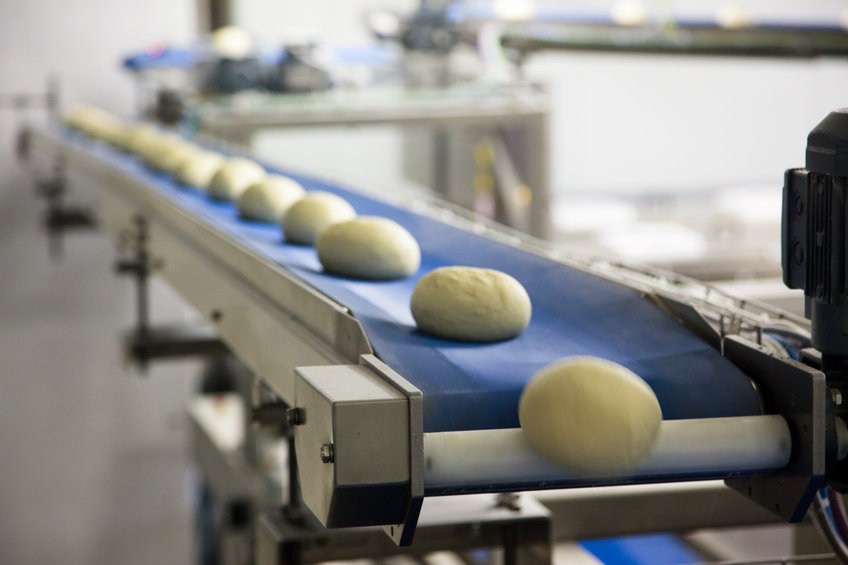Automation Provides a Competitive Edge in the Food Industry
The food industry is highly competitive and all segments – from agriculture to food processing to food packaging – currently face skilled labor shortages and supply chain challenges yet must continue to produce high quantities of product and maintain quality and regulatory compliance.

While the food industry has been slow to adopt automation, current technologies have advanced and the cost of installation has decreased, making it possible for the sector to embrace automation to gain efficiency, improve quality and become more cost effective. From farm to store shelves, today’s adaptable and versatile automation offers a competitive advantage. Read on to see how it’s being used throughout the industry.
The Benefits of Automation in the Food Industry
Because the food industry faces stiff competition and tight margins, skilled labor, efficient production, strict quality control and compliance with regulations and laws regarding safe production and food handling are essential to success. The adoption of automated technologies aids in the achievement of these critical goals as it can boost efficiency, increase quality and provide flexibility, while also lowering costs, improving sanitation and enhancing safety.
- Increased efficiency: Despite labor shortages, participants in the food industry still need to get high-quality product out the door in an efficient manner. When developed and deployed correctly, automation can create more efficient processes as it can help alleviate known bottlenecks by completing work faster and with more consistency and reliability than human workers. The increase in speed reduces downtime and boosts throughput, while consistency removes product variability and eliminates waste. Automation can also run 24/7 if needed during times of peak demand.
- Improved quality: Within the food industry, quality control is essential during the supply, production and distribution processes. Consistency in process and quality inspections can vary during shift changes and among different human employees; however, automation standardizes quality control because every product goes through the same process from beginning to end. Additionally, machines are precise and programmed to reproduce each step with consistency and accuracy, making successful quality control achievable with every run. Additionally, automation technologies for inspection can detect quality issues and problems that less attentive human workers may miss.
- More flexibility: From the introduction of new products to changing laws and regulations, the food industry must adapt quickly. Today’s automation is easier to adjust and repurpose, allowing food manufacturers to keep up with variable product lines and compliance changes. In addition, automation can easily be scaled up or down to meet seasonal demands and customer preferences.
- Improved sanitation: The more human workers interact with food, the greater the likelihood of introducing contamination. Automated equipment limits human contact with food items during processing and packaging, reducing the chances of contamination.
- Lower operating costs: The cost of running automated machinery is oftentimes lower than hiring, training and retaining employees to perform the same tasks manually as, after purchase and installation, automated equipment requires only electricity and occasional maintenance to operate. Because automated equipment runs faster and more consistently than human operators, it is also possible to increase throughput and reduce scrap and waste, further enhancing cost effectiveness.
- Improved safety: Food processing often involves the use of mixers, cutters and fast-moving material handling equipment, while food packaging involves high-speed machinery and heavy lifting. Many of these processes can be automated, eliminating potential injuries to employees and the costs associated with worker’s comp claims and lost labor due to injury.

Food Industry Applications for Automated Equipment
From the farm to manufacturing to getting product ready for the store shelves, automated equipment is finding its way into the food industry in a wide range of applications.
| Agriculture | Farming is the origin of the food industry as it is the source for dairy, meat, grains and produce. Robots and other automated equipment can be used to identify and collect eggs, harvest crops or produce and assist with other routine jobs, freeing farmers and field hands from the responsibility of time-consuming manual tasks. In the past, the agricultural community was hesitant to use automated equipment for handling crops or animals because it was possible to damage soft items; however, many of today’s grippers are delicate enough for picking fruits and vegetables and collecting eggs without damaging or wasting products. |
| Food Manufacturing | While there are many applications that can be automated during the processing and manufacturing of food, typical applications include cleaning and categorizing different food products into containers for further processing; cutting, slicing and dicing fruits, vegetables and meats prior to processing or freezing; de-panning frozen food items to preserve integrity; and dispensing prepared or frozen meals, meats, baked goods, beverages, dairy products or other items into trays or bottles and enclosing them with lids. In addition to these “hands-on” applications, robots and cobots equipped with machine vision can also be used to inspect foods and discard items that don’t meet quality standards. Automated technologies are also used for tending semi-automated food processing machines. |
| Food Packaging | Food packaging and pick-and-place of packaged or unpackaged food items are the segments of the food industry in which automated equipment and robots are most widely used as they offer a quick and effective solution to getting product out the door. Pick-and-place robots can be used to move food products from one place to another and can lift food products from a moving assembly line. Automated packing machines can be used to move products quickly and accurately into boxes or to create the boxes from sheets of cardboard. Robots can be used to pack finished food products into cases and palletizing systems and pick-and-place robots can stack boxes onto pallets. |
A variety of automation technologies can be applied throughout the food industry to provide solutions to the many challenges faced in this sector. As technologies advance to allow for the delicate handling of food products, as well as heavy lifting associated with packing and palletizing, more farms, food processors and packagers will continue to adopt automation in an effort to remain competitive. Automation is a long-term investment that will provide long-term benefits in the food and other industries.
For more information on automated equipment that is appropriate for the food industry, please contact a representative at JHFOSTER.
